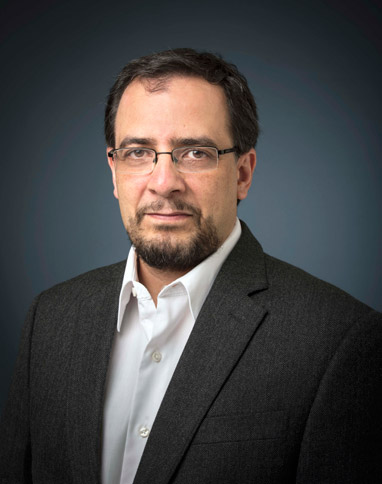CV: Dr. Clement Hamani
Bio basics: A senior scientist in Biological Sciences and the Hurvitz Brain Sciences Research Program at Sunnybrook Research Institute (SRI). Completed his medical degree and PhD at the Federal University of São Paulo in Brazil. Did his neurosurgery residency at the University of São Paulo, followed by a research and clinical fellowship in functional neurosurgery at the Toronto Western Hospital. Was a scientist at the Centre for Addiction and Mental Health in Toronto before joining Sunnybrook in 2017 as head of preclinical research at the Harquail Centre for Neuromodulation.
What was your PhD on?
I did a study on preclinical models of epilepsy. We developed in the lab a new model of epilepsy using a combination of drugs. You could titrate [adjust a drug dose until the desired effect is achieved] specific types of seizures based on the concentration of one drug versus another. We also studied mechanisms of plasticity—in other words, when [the animal] becomes epileptic, how does that develop in the brain? We studied epilogenesis—[defined as] the generation of epileptic circuits in the brain.
Why did you choose neurosurgery?
That’s a good question. I liked neuroscience a lot, since day one of medical school. In the first year I was exposed to neuroanatomy. I loved it. To me, it was fascinating. After that it was neurophysiology.
It was a matter of neurology or neurosurgery. In Brazil you have six years of medical school. The first three years are basic science, and then you’re exposed to clinical work, little by little. From that first basic science course, I loved neuroscience. It was between neurology and neurosurgery. I liked surgery. The possibility of working with the brain—for me it was [an] easy [choice].
What is your research focus?
There are two streams. We are conducting clinical trials testing a technique called deep brain stimulation (DBS), which involves the delivery of electrical stimulation through small electrodes implanted in the brain. In one study, we are investigating whether DBS may be used in patients with post-traumatic stress disorder (PTSD). Additional projects involve testing the effects of DBS in patients with obsessive-compulsive disorder and major depression. I am also involved in projects in which focused ultrasound is being studied for neurological and psychiatric diseases.
My second line of research is preclinical. We conduct translational work. This involves using animal models to find therapies that can be implemented in the clinic, or to explain how clinical therapies work. Our main lines of research involve the development of treatments using DBS and focused ultrasound for traumatic brain injury, depression, anxiety and PTSD.
How do you develop animal models of PTSD?
With most psychiatric disorders you don’t have good animal models because in psychiatry you rely on what the patient tells you. The animals cannot tell you much. You can study stress reactions and similar reactions that are common to humans, and whether an animal responds to antidepressant treatments, but you cannot study PTSD in animals.
There are also neural circuits that are common to humans. You do a positron emission tomography scan and neuroimaging of patients and you observe what areas of the brain are involved in PTSD. You try to establish commonalities, but obviously the models aren’t perfect.
Why did you choose to come to SRI?
Being part of a novel neuromodulation center was very appealing. A major highlight was to join a team of professionals with complementary expertise to tackle several areas in the field, while being able to do preclinical and clinical research. The Harquail Centre for Neuromodulation integrates professionals with different backgrounds like psychiatrists, scientists and neurosurgeons. The exchange of ideas has been quite exciting. At Sunnybrook, I’ve found a very pleasant and collegial atmosphere in which to work.
What is your role at the Harquail Centre for Neuromodulation?
I’m responsible for preclinical basic research. Along with Drs. Nir Lipsman and Peter Giacobbe, I have also been involved in developing clinical trials. As part of translational protocols, we are implementing clinical studies based on research findings obtained in my laboratory.
What do you enjoy doing outside of work?
[Laughs.] That’s a good question. Music is something I enjoy, particularly jazz. I like reading as well, when there is time.
What types of books do you read?
I like nonfiction—history books.
How do you like Toronto?
I think it’s a great city. I have been living here for over 15 years and really enjoy it. It has the advantages of a big city without several of the associated problems.



